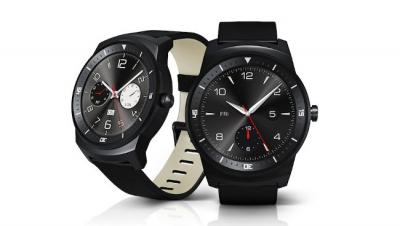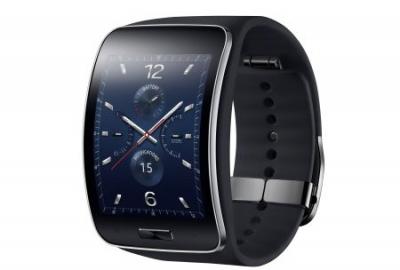Only three days ago I posted that both Samsung and LG are expected to launch new flexible OLED smart watches, and today both Korean companies pre-announced their new devices before the IFA trade show. Indeed they both used plastic-based flexible OLED panels.

So first up is the beautiful LG G Watch R (shown above) - a circular Android Wear smartwatch that use a 1.3" 320x320 (246 PPI) plastic (flexible) OLED panel. The G Watch R will launch in "early Q4 2014", price isn't disclosed yet.
Why did LG use a flexible (plastic-based) OLED Panel? it may be that they found it is easier to cut it to a round shape. Of course a plastic-based OLED is also thinner, lighter and more durable compared to a glass-based OLED, which is very important in a wearable device. But I think the real reason is that they simply wanted to use an in-house OLED and the only small OLEDs that LG Display produce at the moment are plastic based.

Samsung's Gear S is the company's sixth (!) smart watch released in the past year. This is a Tizen-based device that includes a stand-alone 3G modem, so it does not need to pair with a smartphone. It has a 2" 360x480 (300 PPI) plastic-based flexible/curved Super AMOLED display. The Gear S will ship in October 2014. No word on pricing on that one either.
It's great to see those two very nice looking smartwatches - both with flexible OLED panels. It's interesting to see how the design of smart watches is advancing with each iteration. Of course everybody is waiting to see whether Apple will unveil their own smartwatch soon and really define the new category...
Comments
(1)
If G Watch R display is SQUARE, pixel density is:
√(3202+3202) = 452.54... 452.5 ÷ 1.3 ≒ 348 (PPI)
But it is ROUND, so pixel density is: 320 ÷ 1.3 ≒ 246 (PPI)
I guess it's convetional RGB stripe, because G Flex (245 PPI) is also conventional RGB stripe.
(2)
Pixel density of Gear S display:
√(4802+3202) = 576.88... 576.8 ÷ 2 ≒ 288 (PPI)
It should be RGB S-stripe, like display of Gear 2 (278 PPI) and Tab S 10.5 (288 PPI).
Oh... superscript doesn't work.
3202 --> 320^2 = 320x320
4802 --> 480^2 = 480x480
Thanks guys for the round-PPI correction! I was wrong of course in my own calculation...


How do you calculate ppi in round display? and what 320x320 means in round display. Does it have 320 pixel in a diameter which is 1.3 inch? In that case the ppi should be 246.